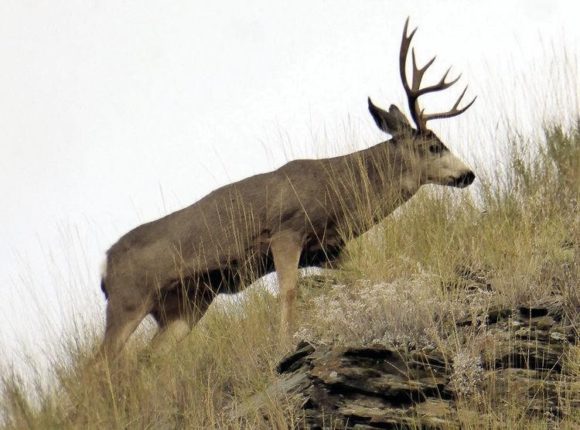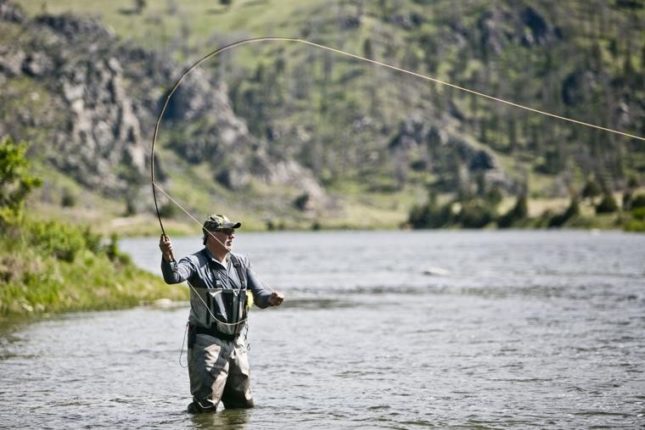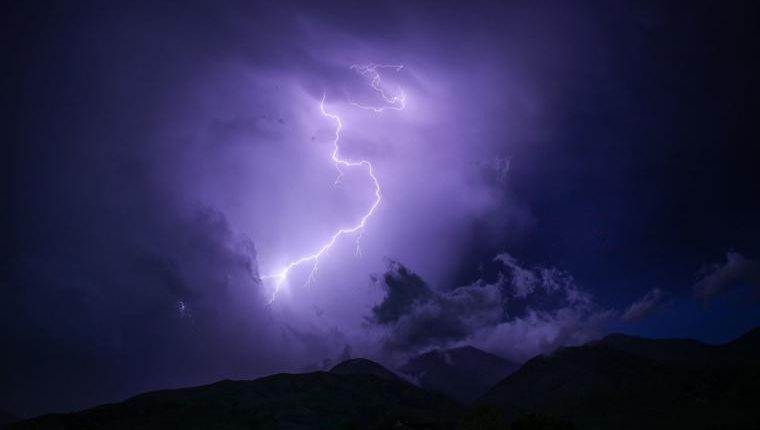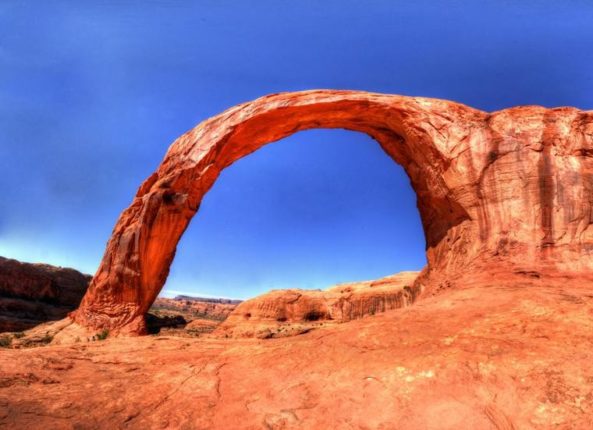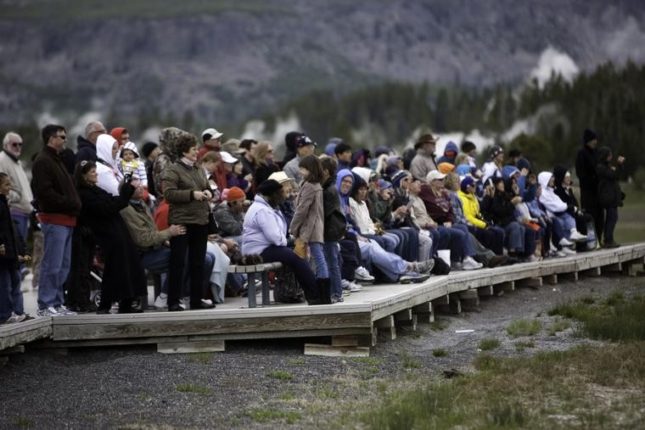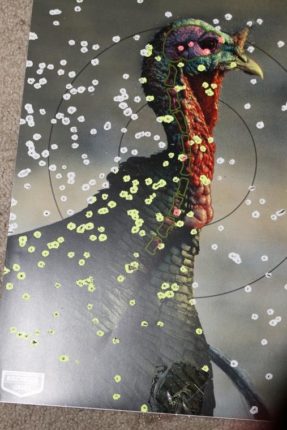CASPER, Wyo. (AP) — The longest recorded migratory mule deer herd in the world travels about 150 miles from the Red Desert in southwest Wyoming to a place called the Hoback.
Discovered in 2012, the route garnered national attention and inspired countless discussions about its protection. It was an example of something infinitely impressive: the longest mule deer migration trekking unnoticed in Wyoming’s backyard.
Longest until now, anyway.
In 2016, researchers with the University of Wyoming placed 40 collars on deer in the Red Desert and then watched as the animals wandered their way through greener grass.
Most of them stopped in the northwest corner of the state until cooler weather and snow would push them back down to the desert.
Except one deer. Doe number 255 — as named by her GPS — didn’t stop in the gentle valleys of the Hoback. She continued north, climbing up and over the Gros Ventre Range, dropping down into Jackson Hole, walking around Jackson Lake and up and over the foothills of the Tetons, sliding west into Idaho and ultimately landing in the relatively lush region of Island Park, Idaho.
Biologists watched in awe at her progress, wondering where she was headed and if she would come back.
Then her collar died.
She had traveled almost 250 miles, said Matt Kauffman, leader of the Wyoming Migration Initiative and the USGS Cooperative Fish and Wildlife Unit at the University of Wyoming.
“It’s really pretty impressive. For a lot of animal movements, we look at them on the map and think about the elevations, but this would be an all-day trip in a car,” Kauffman said. “In a car you’re moving across paved roads with a combustion engine.”
But without more data, only questions remained: Would she return to her winter range in the Red Desert? Did she connect with another herd in Idaho — a rarity, but a possible option? Was it an isolated incident, or is there a group of deer that follows that same path, blowing the previous longest-migratory herd out of the record books?
For almost two years, Kauffman and other biologists wondered where deer 255 ended up, the Casper Star-Tribune reported .
Her 242-mile path would go down in the record books as a potential anomaly, something they couldn’t explain or use to draw conclusions because of lack of data.
In mid-March, two years after her first capture, crews with Game and Fish and the Migration Initiative began yet another capture of does in the Red Desert.
Kauffman asked the pilot to try and capture any deer with brown collars, ones they’d used in the past.
On March 12, a graduate student on the project realized the serial number on an animal they caught with an old brown collar was deer 255.
She had come back.
“We now know it wasn’t a fluke, she wasn’t dispersing into a different herd,” Kauffman said. “It was her migration.”
And if it is an established route, that means more travel the same one.
Deer 255 has a new collar now. It pings her location every two hours. Last Thursday, she was making her way north through the Red Desert, between Steamboat Mountain and Highway 28.
While researchers were amazed by the doe’s journey – and the likelihood that others travel the same way with her – it also reminds them of what routes have likely been lost already to development. It also tells them what should be done in the future.
“I just hope we’re smarter about when we need to build infrastructure, when we need to build fencing, when we need to extract resources, whatever, that we’re smarter about where that activity happens and what it looks like,” Mark Zornes, wildlife supervisor for the Wyoming Game and Fish Department’s Green River region and a collaborator on the project, said. “We’re spoiled rotten and lucky we have what we have, and we have to be wise in our selection of what we build.”
———
Information from: Casper (Wyo.) Star-Tribune, http://www.trib.com
